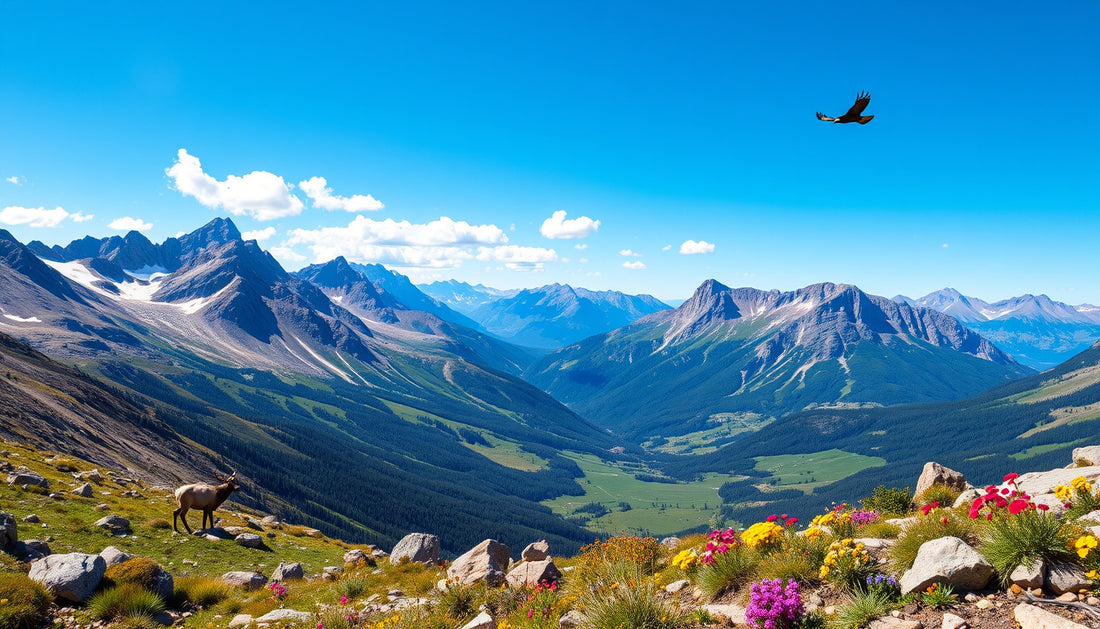
Unveiling the Majesty: A Comprehensive Guide to Exploring Rocky Mountain National Park
Share

Nestled in the heart of Colorado, Rocky Mountain National Park (RMNP) is a treasure trove for nature enthusiasts, adventure seekers, and anyone yearning to connect with the great outdoors. But what exactly makes RMNP a must-visit destination, and how can you make the most of your trip? Whether you're a seasoned hiker, a casual traveler, or a family looking for an unforgettable getaway, this guide will walk you through everything you need to know to truly unveil the majesty of Rocky Mountain National Park.
Why Rocky Mountain National Park?
RMNP spans over 415 square miles of stunning mountain landscapes, diverse wildlife, and breathtaking alpine ecosystems. Established in 1915, it is one of the most visited national parks in the United States—drawing over 4.5 million visitors annually. But beyond popularity, its appeal lies in its unique geological features and extensive trail systems.
Key Facts About RMNP:
- Elevation range: 7,500 to 14,259 feet (Longs Peak)
- Over 300 miles of hiking trails
- Wildlife: Elk, bighorn sheep, black bears, and over 280 bird species
- Climate: Variable; summer days are warm but nights can be chilly; winters bring heavy snowfall
- Visitor centers: Beaver Meadows and Fall River provide educational resources and ranger programs
Dr. Linda Potts, an ecologist with over 20 years of experience studying Rocky Mountain habitats, highlights, “The park is not just a recreational area; it’s a living classroom showcasing the resilience and diversity of alpine life.”
Planning Your Visit
When to Go?
Each season offers a distinct experience at RMNP. Spring and fall bring vibrant colors and fewer crowds, while summer is perfect for hiking and wildlife viewing. Winter transforms the park into a snowy wonderland for snowshoeing and cross-country skiing.
- Summer (June - August): Warmest weather but busiest time.
- Fall (September - October): Cooling temperatures and stunning autumn foliage.
- Winter (November - March): Snow-covered trails inviting winter sports enthusiasts.
- Spring (April - May): Wildflowers bloom, though some trails remain snowbound.
Essential Preparation Tips
- Altitude Awareness: The high elevation means thinner air. Stay hydrated, ascend slowly, and watch for altitude sickness symptoms.
- Weather Preparedness: Weather can shift rapidly. Pack layers, rain gear, and sun protection.
- Permits and Passes: Most visitors need an entrance pass. For popular trails like Longs Peak, permits are required.
- Leave No Trace: Respect the environment—stay on marked trails and pack out all trash.
Top Activities to Experience
Hiking and Backpacking
With over 300 miles of trails, RMNP offers routes for every skill level. Families might enjoy the Bear Lake Trail, a serene 0.6-mile loop around a glacial lake. For the adventurous, the 14-mile trek to Longs Peak’s summit is a challenging but rewarding endeavor.
Wildlife Watching
Early morning and late evening are prime times to spot elk herds grazing in the meadows or bighorn sheep navigating rocky slopes. Birdwatchers will delight in the diversity of over 280 species, including the elusive White-throated Swift.
Scenic Drives
Trail Ridge Road, the highest continuously paved road in North America, rises to over 12,000 feet and offers spectacular panoramic views. Be sure to stop at viewpoints like Rainbow Curve and Alpine Visitor Center for photo opportunities.
Photography and Nature Immersion
From majestic mountain vistas to delicate alpine flowers, RMNP is a photographer’s dream. Consider joining a ranger-led photography workshop to learn techniques for capturing the park’s unique beauty effectively.
Environmental Conservation and Caring for RMNP
How often do we think about the impact of our visit on such pristine natural areas? National parks like RMNP rely heavily on responsible tourism. Park Ranger Miguel Sanchez explains, “Every visitor has a role in preserving the park’s ecosystem. Simple actions like avoiding wildlife disturbance and sticking to established trails help protect these fragile environments.”
Conservation Highlights:
- Efforts to restore native vegetation damaged by foot traffic
- Programs monitoring wildlife health and migration patterns
- Educational outreach promoting sustainable visitor behavior
Ready to Explore?
Are you inspired to immerse yourself in the natural grandeur of Rocky Mountain National Park? Whether you’re looking for tranquil hikes, challenging climbs, or simply a place to reconnect with nature’s magnificence, RMNP offers something unforgettable for everyone.
Take Action: Plan your visit today with respect for this incredible environment. Support conservation by following guidelines, participating in volunteer cleanups, or even donating to park preservation efforts. The majesty of Rocky Mountain National Park awaits—and your adventure starts now!
References:
- National Park Service, Rocky Mountain National Park: https://www.nps.gov/romo/index.htm
- Interview with Dr. Linda Potts, Ecologist
- Interview with Ranger Miguel Sanchez, RMNP Visitor Services






